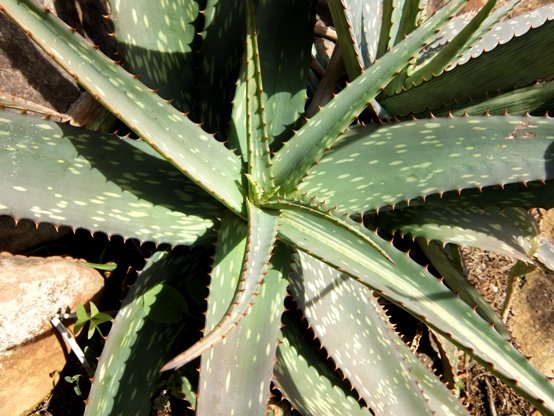Aloe greenii leaves

Author: Ivan Lätti
Photographer: Thabo Maphisa
Aloe greenii grows leaves that attenuate gradually and recurve slightly towards their tips. Oblong to elliptic white leaf markings are scattered in varying density along both leaf surfaces, sometimes becoming confluent in irregularly shaped bands. The marginal leaf prickles are hard, sharp and pinkish brown. The young leaf margins in picture are more upturned than those of mature leaves.
One or two laxly flowered, slender inflorescences of up to 1,3 m are produced between midsummer and early autumn. Four to seven cylindrical to conical racemes form the panicle. Long, pointed, lanceolate bracts subtend every panicle branch. The dark to flesh pink perianth is constricted above the basal swelling over its ovary. The anthers and stigma are exserted from the perianth mouth.
Reynolds found the species more worth cultivating for its gracefully curving leaves than its flowers.
The closest resemblance to another species is A. pruinosa that flowers taller, doesn’t clump as much and has a stronger, greyish white bloom over flowers and peduncle.
The inflorescence sometimes produces plantlets vegetatively, a survival response found in several Aloe species (Van Wyk and Smith, 2003; Reynolds, 1974; Jeppe, 1969; iNaturalist; www.plantzafrica.com).

